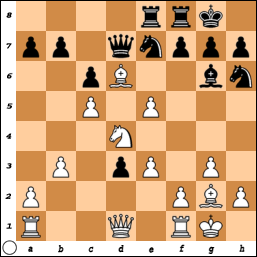It seems no one was able to get all 5 tactics puzzles right, plenty of people got 4 out of 5 but with no 100% scores, I have been at a loss. Increase the tactical difficulty or decrease it? Why do I say this? I have very sharp tactical games and that is my forte. However not all games are decided on tactics, though most are. I was having a discussion with a friend of mine. And it went something like this.
“I get the most satisfaction after a tactical crush”, then my friend said, “I find it better when I can have full control and just grind them down”. At first It sounded to me like a positional player talking nonsense. But then I had a thought, having control could mean not allowing any counter play, while grinding them down might mean using your pieces to slowly strangle your opponent like a boa constrictor.
With this thought in mind I thought I would talk a bit about outposts, many of us know what they are, but not many people seem to know what to do with them. Being an aggressive and tactical player I like to outpost a piece for aggressive reasons, take the below position for example.

Clearly white is better, maybe even winning, but the most prominent feature of his position is the bishop on d6. It has found a square on the opponents side of the board and is not only protected by pawns, but can’t be kicked with an enemy pawn either, hence it’s on an outpost. Not surprisingly, white won this game, but what would an attacking player want with an outpost? It is quite simple; an outposted piece creates tactics that the opponent has to constantly be aware of. It can get annoying actually.
Another reason for using outposts like this is to do with the idea of tension between pieces. Meaning in the above position, white’s bishop could capture the knight whenever it wants and the knight does not return the favour. Put yourself in blacks shoes, try to imagine that after every single move you have to consider, bishop takes knight, bishop takes knight, bishop takes knight, and the one time that he doesn’t look at it, is the one time that it works! That would suck, but it shows the power of the outposted bishop here.
The best piece to have on an outpost is actually a knight, as they can jump away from their outpost and really cause problems.
Now i would really like to know what you want to learn about, so let me know as a comment and i will look at it, dont ask for an opening like, the 'sicilian' as it is way to vast, but 1 line or variation is fine.
The answers for the puzzles were.
1. Qb2 wins a rook at least
2. Qxf7+ forces mate
3. Rxc4 followed by Nf2+ wins a truckload of matierial or mates
4. Although Qd8 is enough to win, by far the best is Qe6 which will force mate.
5. Rxa3! what a move, it at least wins the queen, if white wants to keep his queen then he wil lose his king.
No puzzles this time, if you want me to regularly create puzzles then let me know.
Here is the full game from above.
No comments:
Post a Comment